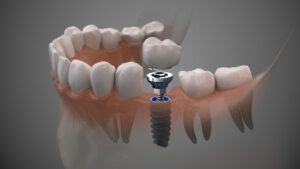What Are The Types Of Gum Disease?
Roughly half of the adults in the U.S. suffer from some level of gum disease. Yet, all too often, people don’t look into treating gum disease until it turns severe. Knowing the characteristics of the different levels of gum disease can empower you to step up your dental health efforts if you notice issues arising with the health of your teeth and gums. Even if you’re brushing and flossing diligently, gum disease, for any number of reasons, can still emerge as a serious threat to your oral health. But when you know what to look for, you’ll know where you need to turn.
Gingivitis
The early stages of gum disease are characterized by the hardening of plaque, the pasty white or yellow-ish substance that’s made of bacteria and leftover food particle. When plaque hardens onto teeth, it turns into what’s known as “dental calculus” or simply “tartar.” You can’t remove dental calculus from your teeth at home. You’ll need a dental hygienist to carefully scrape it from your teeth and to polish your teeth afterwards. And you’ll need a periodontist to determine if further treatment is needed.
Periodontitis
When the early signs of gum disease advance into conditions that threaten the teeth, gums and jawbone underneath, it’s classified as periodontitis. Many of the symptoms of periodontitis look like moderate or severe versions of those of gingivitis. Some of the distinct symptoms of periodontitis include the following:
- – Receding gums – when receding gums occur teeth appear longer because the gums, under assault from gum disease, are slowly decaying and receding.
- – Loose teeth – barring trauma, teeth that move even just a little are a sign of advanced gum disease.
- – Swollen, discolored gums – easy-to-spot swelling and bright-red or purple gums indicate that the gum disease is no longer in its early stages.
- – Bleeding gums – in the early stages of gum disease, there may be slight bleeding after brushing. During the advanced stages, it may take much less for the gums to start bleeding – including simply touching them.
Combating Gum Disease
Click here to set up a time to talk with a local periodontist in Chicago, IL to learn more about your options for treating gum disease.


